Related Research Articles
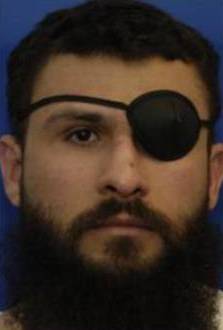
Abu Zubaydah is a Palestinian citizen born in Saudi Arabia currently held by the U.S. in the Guantanamo Bay detention camp in Cuba. He is held under the authority of Authorization for Use of Military Force Against Terrorists (AUMF).

Mohammed Mani Ahmad al-Qahtani is a Saudi citizen who was detained as an al-Qaeda operative for 20 years in the United States's Guantanamo Bay detention camps in Cuba. Qahtani allegedly tried to enter the United States to take part in the September 11 attacks as the 20th hijacker and was due to be onboard United Airlines Flight 93 along with the four other hijackers. He was refused entry due to suspicions that he was trying to illegally immigrate. He was later captured in Afghanistan in the Battle of Tora Bora in December 2001.
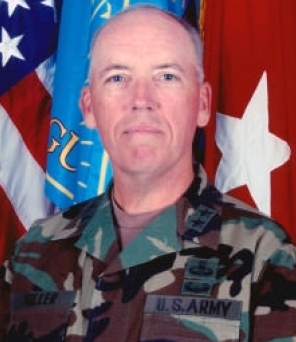
Geoffrey D. Miller is a retired United States Army major general who commanded the US detention facilities at Guantanamo Bay, Cuba, and Iraq. Detention facilities in Iraq under his command included Abu Ghraib prison, Camp Cropper, and Camp Bucca. He is noted for having trained soldiers in using torture, or "enhanced interrogation techniques" in US euphemism, and for carrying out the "First Special Interrogation Plan," signed by the Secretary of Defense, against a Guantanamo detainee.

Murat Kurnaz is a Turkish citizen and legal resident of Germany who was held in extrajudicial detention by the United States at its military base in Kandahar, Afghanistan and in the Guantanamo Bay detention camp at Guantanamo Bay Naval Base, Cuba beginning in December 2001. He was tortured in both places. By early 2002, intelligence officials of the United States and Germany had concluded that accusations against Kurnaz were groundless.
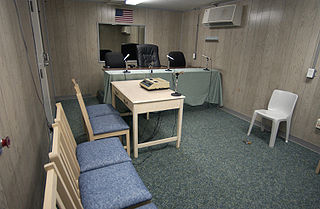
The Combatant Status Review Tribunals (CSRT) were a set of tribunals for confirming whether detainees held by the United States at the Guantanamo Bay detention camp had been correctly designated as "enemy combatants". The CSRTs were established July 7, 2004 by order of U.S. Deputy Secretary of Defense Paul Wolfowitz after U.S. Supreme Court rulings in Hamdi v. Rumsfeld and Rasul v. Bush and were coordinated through the Office for the Administrative Review of the Detention of Enemy Combatants.
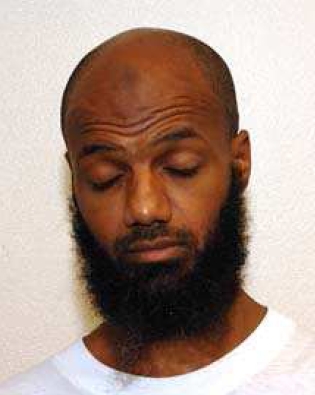
Binyam Ahmed Mohamed, also referred to as Benjamin Mohammed, Benyam Mohammed or Benyam Mohammed al-Habashi, is an Ethiopian national and United Kingdom resident, who was detained as a suspected enemy combatant by the US Government in Guantanamo Bay prison between 2004 and 2009 without charges. He was arrested in Pakistan and transported first to Morocco under the US's extraordinary rendition program, where he claimed to have been interrogated under torture.

Mustafa Ait Idir is an individual formerly held in the United States Guantanamo Bay detainment camps, in Cuba. Ait Idir was born in Algeria, but moved to Bosnia, married a Bosnian woman, and became a Bosnian citizen. Idir was arrested on October 18, 2001, on suspicion of participating in a conspiracy to bomb the United States Embassy. After their release following their acquittal, the six men were captured on January 17, 2002, by American forces, who transferred them to Guantanamo Bay.

Alberto José Mora is a former General Counsel of the Navy. He led an effort within the Defense Department to oppose the legal theories of John Yoo and to try to end the use of torture at Guantanamo Bay.
The Guantanamo Bay detention camp is a United States military prison within Naval Station Guantanamo Bay (NSGB), also called GTMO on the coast of Guantánamo Bay, Cuba. It was established in January 2002 by U.S. President George W. Bush to hold terrorism suspects and "illegal enemy combatants" during the Global War on Terrorism following the attacks of September 11, 2001. As of August 2024, at least 780 persons from 48 countries have been detained at the camp since its creation, of whom 740 had been transferred elsewhere, 9 died in custody, and 30 remain; only 16 detainees have ever been charged by the U.S. with criminal offenses.
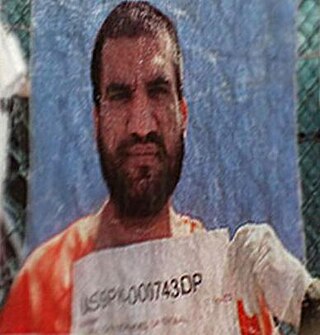
Muhammad Saad Iqbal is a Pakistani citizen who was held in extrajudicial detention in the United States Guantanamo Bay detention camps, in Cuba. Madni's Guantanamo Internment Serial Number was 743. The Department of Defense reports that he was born on October 17, 1977.
The United States Department of Defense (DOD) had stopped reporting Guantanamo suicide attempts in 2002. In mid-2002 the DoD changed the way they classified suicide attempts, and enumerated them under other acts of "self-injurious behavior".

Matthew Mark Diaz is a former active-duty Lieutenant Commander (LCDR) and Judge Advocate General's Corps (JAGC) officer in the United States Navy. In mid-to-late 2004, Diaz served a six-month tour of duty in Guantanamo Bay, Cuba as deputy director of the detention center's legal office. Early in 2005 as LCDR Diaz was concluding his tour, he sent an anonymous greeting card to The Center for Constitutional Rights, a New York civil liberties and human rights group. The card contained the names of the detainees held at the Guantanamo Bay detention camp. In July 2006, the United States government formally charged Diaz in a military court with five criminal counts related to the sending of these names, the most serious being that he intended to harm national security or advantage a foreign nation, a violation of the Espionage Act. In May 2007, he was convicted by a seven-member jury of military officers on 4 of 5 counts. He served a 6-month prison sentence and was dismissed from the military.
"Enhanced interrogation techniques" or "enhanced interrogation" was a program of systematic torture of detainees by the Central Intelligence Agency (CIA), the Defense Intelligence Agency (DIA) and various components of the U.S. Armed Forces at remote sites around the world—including Bagram, Guantanamo Bay, Abu Ghraib, and Bucharest—authorized by officials of the George W. Bush administration. Methods used included beating, binding in contorted stress positions, hooding, subjection to deafening noise, sleep disruption, sleep deprivation to the point of hallucination, deprivation of food, drink, and medical care for wounds, as well as waterboarding, walling, sexual humiliation, rape, sexual assault, subjection to extreme heat or extreme cold, and confinement in small coffin-like boxes. A Guantanamo inmate's drawings of some of these tortures, to which he himself was subjected, were published in The New York Times. Some of these techniques fall under the category known as "white room torture". Several detainees endured medically unnecessary "rectal rehydration", "rectal fluid resuscitation", and "rectal feeding". In addition to brutalizing detainees, there were threats to their families such as threats to harm children, and threats to sexually abuse or to cut the throat of detainees' mothers.

Shayana D. "Shane" Kadidal is an American lawyer and writer. Kadidal has worked at the Center for Constitutional Rights in New York City since 2001, and is senior managing attorney of the Guantánamo Global Justice Initiative there, coordinating legal representation for the captives held in extrajudicial detention in the United States' Guantanamo Bay detention camps, in Cuba. Previously a writer on patent, drug and obscenity law, since 2001 he has played a role in various notable human rights cases, including:
Diane E. Beaver is an American lawyer and former officer in the United States Army. In 2001, she was Chief of the Eastern U.S. Torts Branch of the U.S. Army Claims Service. By 2002, she was deployed to the Guantanamo Bay detention camp as a lawyer in the U.S. military prison complex there. As of 2016, she is currently practicing commercial litigation for the Bryan Cave law firm in St. Louis, Missouri.
Torturing Democracy is a 2008 documentary film produced by Washington Media Associates. The film details the use of torture by the Bush administration in the "War on Terror."
Rafiq Bin Bashir Bin Jalud al Hami is a citizen of Tunisia, who was formerly held for over seven years without charge or trial in the United States's Guantanamo Bay detention camps, in Cuba. His Guantanamo Internment Serial Number was 892. The Department of Defense reports that he was born on 14 March 1969, in Tunisia.
Robert J. Delahunty is an American legal scholar. He is a professor at the University of St. Thomas School of Law in Minneapolis, Minnesota. From 1989 to 2003, he worked in the Office of Legal Counsel. During his tenure there, he cowrote several legal opinions with John Yoo relating to interrogation, detention, and rendition of terror suspects.

Detainees held in the United States' Guantanamo Bay detention camps have initiated both individual and widespread hunger strikes at Guantánamo Bay, and camp medical authorities have initiated force-feeding programs.
Thomas Selim Wallner is a German/Canadian filmmaker.
References
- ↑ "The Guantanamo Trap". CBC News. 2011-04-29. Retrieved 2011-11-18.
We started this segment with a clip from Diane Beaver, now a retired lawyer who was a Lt. Col. and legal advisor in the U.S. Army's Judge Advocate General Corps. And she's speaking about the prisoners she saw while working at the U.S. Military Prison in Guantanamo Bay, Cuba and the dark days after 9/11 and the pressure she and others say they felt to get those prisoners to talk.
- ↑ "The Guantanamo Trap". Four Corners. 2011-08-01. Retrieved 2011-11-18.
The second person in this story is Diane Beaver, a Judge Advocate for the US Defence Forces. Deployed to Guantanamo she is responsible for drafting a legal memorandum that would later be nicknamed the 'torture memo'. Beaver, a self confessed conservative, supports the war on terror and simply tries to follow orders creating a document that defines what interrogators can and cannot legally do to inmates.
- ↑ "The Guantanamo Trap". Encounters magazine . 2011-06-26. Archived from the original on 2011-09-30. Retrieved 2011-11-18.
Judge Advocate Diane Beaver volunteers for Guantanamo and becomes the international press's 'torture lady'.
- ↑ "HotDocs 2011: The Guantanamo Trap". Hot Docs. 2011-05-23. Archived from the original on 2011-11-07. Retrieved 2011-11-18.
Not that you need to be completely even-handed when discussing torture, but it's quite fascinating to hear Diane Beaver (appointed legal advisor to the camp command at Guantanamo in early 2002) talk about why she wrote that initial memo and why she does not believe that any of those techniques bordered on torture (by what she terms as "any definition" of the word you'd care to name). The film itself is quite careful to never explicitly state that any of these methods are actually torture, but it's hard to escape that conclusion when you hear people who have experienced it talk to the camera about it.
- ↑ David Silverberg (2011-05-12). "Op-Ed: The Guantanamo Trap a powerful intelligent documentary on torture". Digital Journal. Retrieved 2011-11-18.
What elicited the most reaction during the film was the story of Diane Beaver, someone consistently linked with torture if you Google her name. Also a Judge Advocate for the U.S. military, she is best known as the author of a legal memorandum that would later be nicknamed, 'The Torture Memo.' That act has forever shadowed her, even though she never regrets listing the many new ways prisoners can be interrogated at Gitmo, which Donald Rumsfeld approved. Consider Beaver responsible for tactics such as stripping prisoners naked and exposing them to phobias such as barking dogs.
- ↑ Adrian Mack (2011-11-17). "The Guantanamo Trap plays Amnesty International Film Fest". Georgia Strait . Retrieved 2011-11-18.
She's not without sympathy, since Beaver was hung out to dry in the time-honoured fashion by everybody further along the chain of command.
- ↑ "Ex-Terror Detainee Says U.S. Tortured Him". CBS News. 2009-02-11. Archived from the original on 2011-11-09. Retrieved 2011-11-20.
- 1 2 3 4 "Documentary holds up four-sided mirror to Guantanamo Bay". Deutsche Welle. 2011-08-29. Archived from the original on 2011-09-30. Retrieved 2011-11-18.
As a Navy lawyer at Guantanamo Bay, Matt Diaz copied a list of prisoners and posted it to a human rights organization in New York, morally compelled to speak out against the atrocities he had witnessed at Guantanamo. His thanks came in the form of deafening silence from human rights defenders and a six-month prison sentence for defying his superiors and his government.